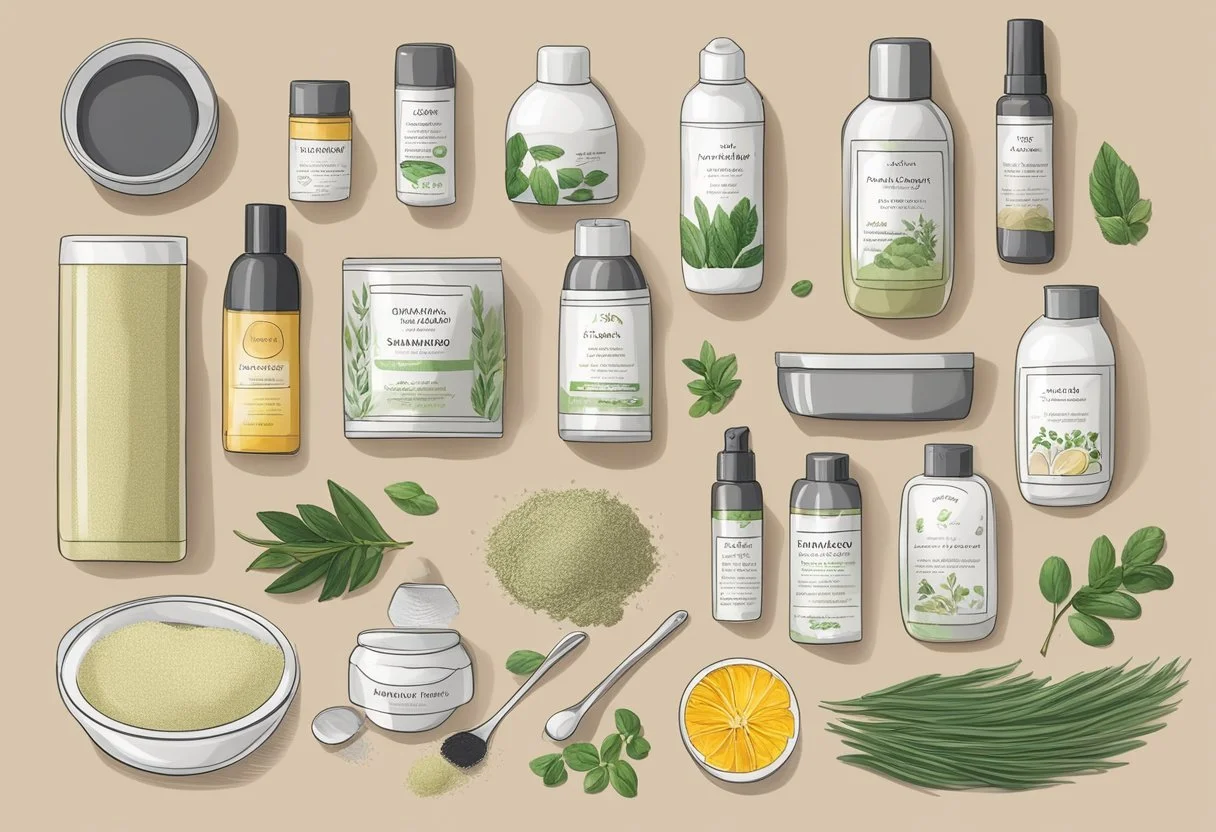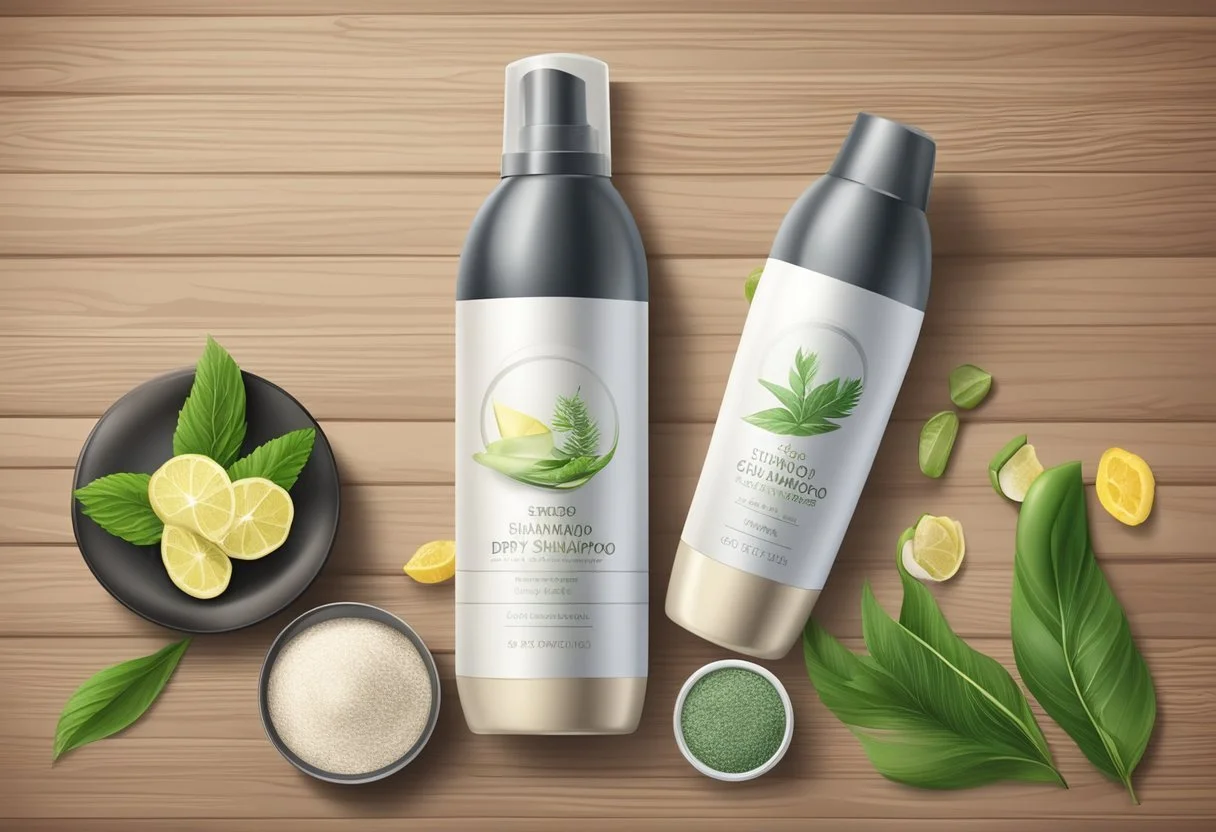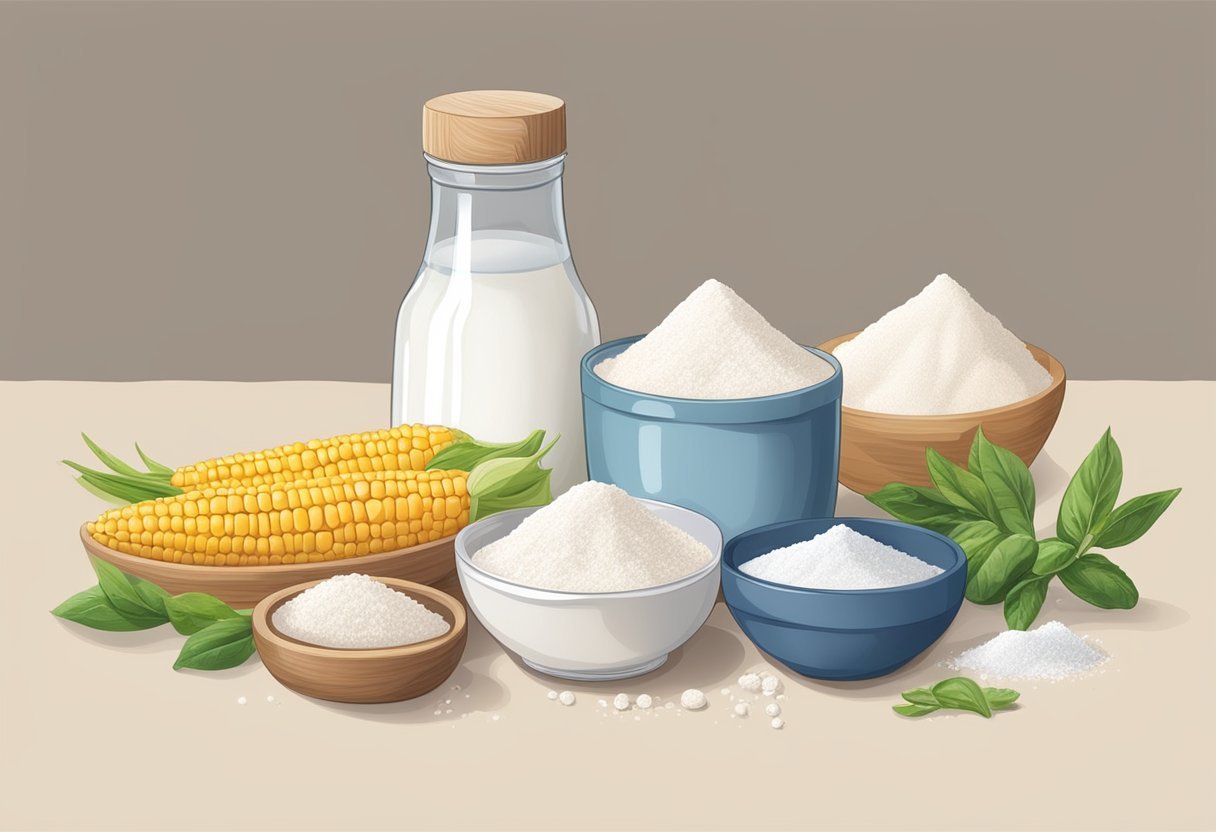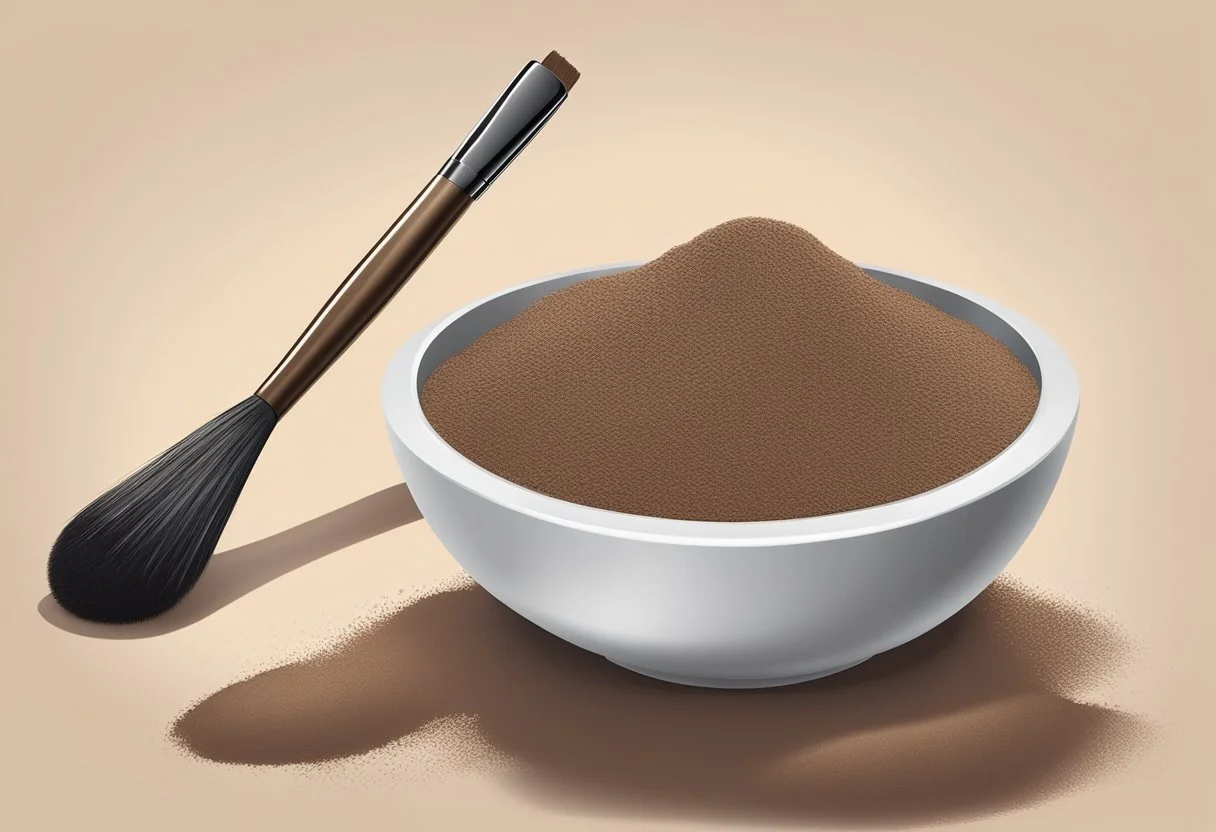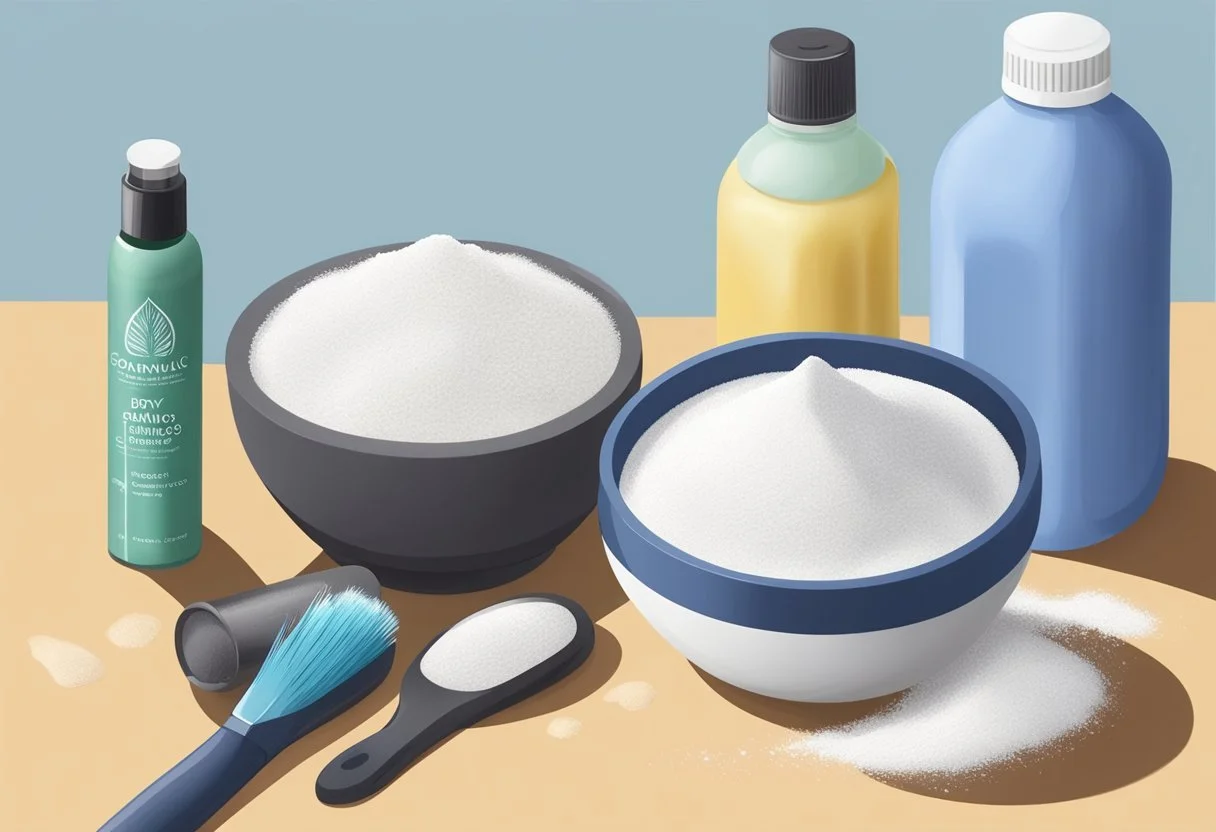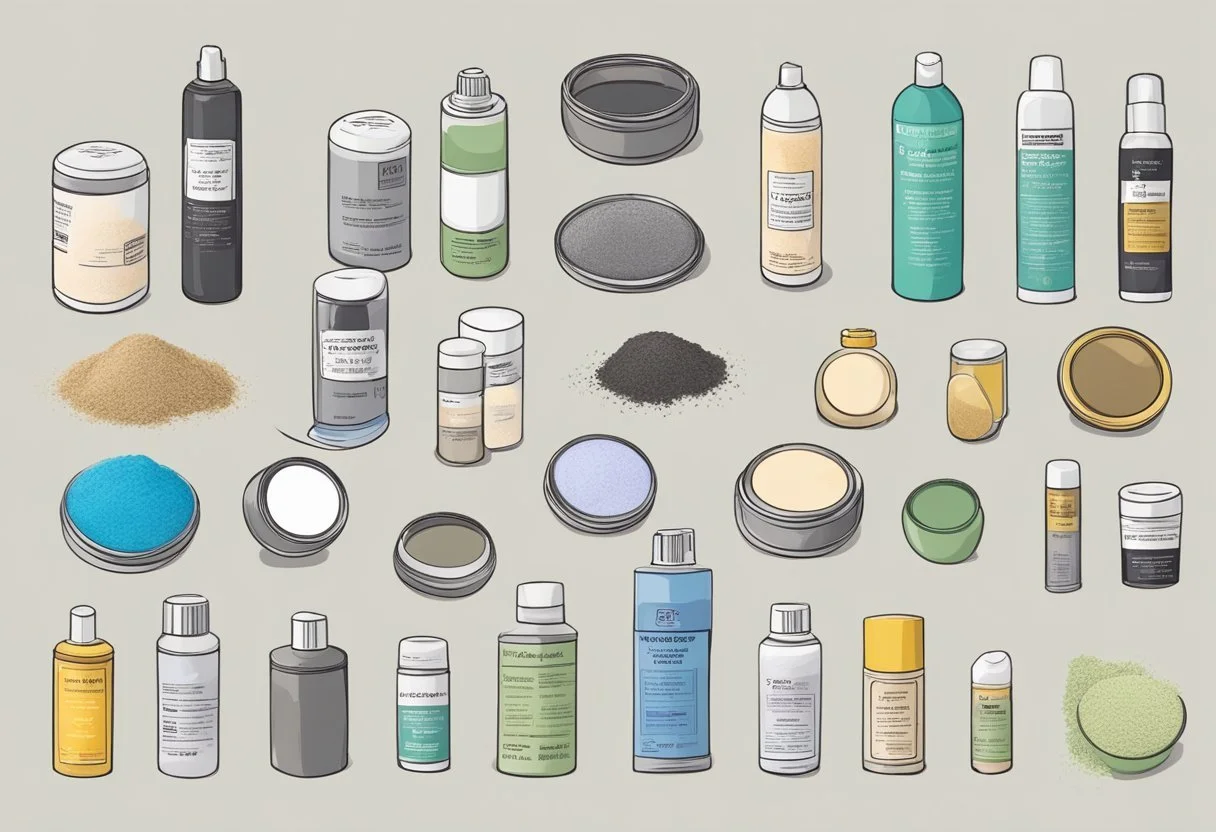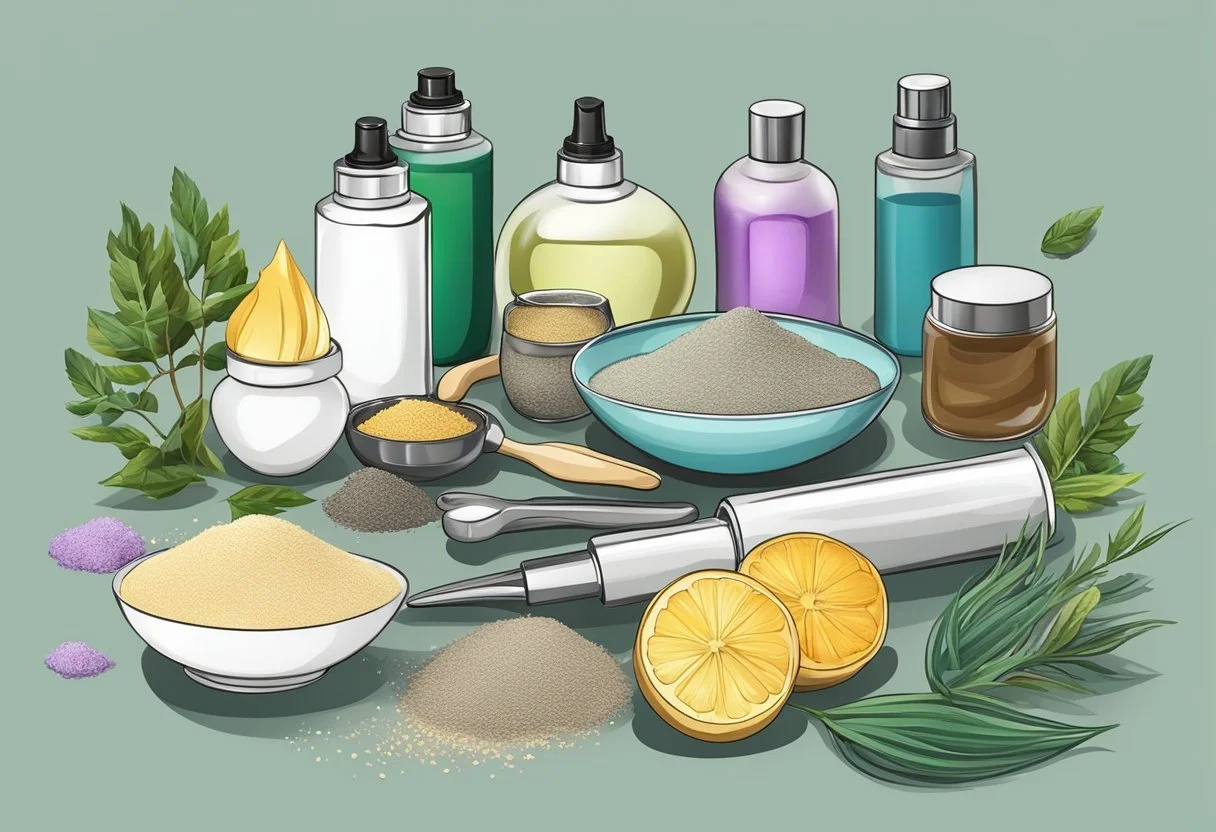Homemade Dry Shampoo Recipe
Simple and Effective DIY Solution
This article is part of our series on Natural Health
Discover > Natural Health > Homemade Dry Shampoo Recipe
Dry shampoo has become an essential hair care product for many individuals, providing a quick and convenient solution to refresh and revitalize greasy, limp locks. However, store-bought dry shampoos may contain harsh chemicals or come at a steep price, prompting some to seek out alternatives. A homemade dry shampoo recipe is an excellent option for those looking to minimize their exposure to potentially harmful ingredients and save money, while still achieving the desired effects.
Creating your own dry shampoo at home can be easy, cost-effective, and customizable to suit individual hair types and personal preferences. By using readily available natural ingredients, the homemade formula not only absorbs excess oil, but also adds volume and texture to the hair without leaving a significant residue or causing irritation. In addition, making dry shampoo at home allows for greater control over the scent and potency of the product, ensuring a pleasant experience for users.
What is Homemade Dry Shampoo?
Homemade dry shampoo is a DIY alternative to store-bought products designed to refresh and revitalize the hair between washes. It is created using all-natural ingredients and can be tailored to suit individual hair types and preferences. This customizable solution absorbs excess oil, eliminates odor, and adds volume to the hair without using harsh chemicals.
One of the primary advantages of a DIY dry shampoo is the ability to choose the best ingredients for one's hair type. Common ingredients include cornstarch (how long does cornstarch last?), baking soda (how long does baking soda last?), cocoa powder, and essential oils, all of which can be adjusted for the desired look and feel. Moreover, homemade dry shampoo is typically more cost-effective compared to store-bought products, while also reducing waste and plastic consumption.
To create homemade dry shampoo, simply combine the selected ingredients, store them in a container, and apply them directly to the hair roots. To ensure an even distribution of the product, a makeup brush or old spice jar may be useful. After applying the dry shampoo, let it sit for a few minutes to absorb oils and gently massage it in before brushing it out or using a hairdryer to remove any residue.
In conclusion, homemade dry shampoo offers a natural, budget-friendly, and customizable solution for maintaining and revitalizing hair between washes. By choosing ingredients that suit one's hair type, individuals can achieve the desired results while also enjoying the numerous benefits of an all-natural product.
Benefits of Using Homemade Dry Shampoo
Homemade dry shampoo offers a natural and effective way of maintaining hair health without introducing potentially harmful chemicals that may be found in commercial dry shampoos. By using natural ingredients, individuals can avoid exposure to unnecessary additives, making homemade dry shampoo a safer alternative for both the hair and scalp.
One of the key advantages of using homemade dry shampoo is its contribution to hair growth. Incorporating natural ingredients such as cornstarch, arrowroot powder (how long does arrowroot powder last?), and essential oils helps absorb excess oil and promote a healthier scalp environment. By keeping the scalp clean and free from excess oil, it sets the stage for optimal hair growth.
In addition, homemade dry shampoo can also provide a boost in volume. As the mixture works to absorb the oil, it adds texture and fullness to the hair, resulting in a more voluminous appearance. This makes it a perfect solution for those who struggle with flat or lifeless hair due to excessive oil production.
Opting for a homemade dry shampoo formula can help individuals cater to specific hair needs by creating a customized solution. For example, essential oils can be selected based on personal preferences or to target specific scalp concerns, such as lavender oil for its soothing properties or rosemary oil (how long does rosemary oil last?) for its ability to stimulate hair growth.
Lastly, the absence of harmful chemicals in homemade dry shampoos means it is gentler on the scalp and does not strip away the natural oils that are necessary for hair health. This balanced approach helps maintain an ideal environment for the hair and ultimately reduces the risk of scalp irritation or damage.
By using homemade dry shampoo, individuals can benefit from healthy hair growth, added volume, and a personalized approach while avoiding harmful chemicals and fostering a healthier scalp environment.
Understanding Your Hair Type
Knowing your hair type is crucial when selecting the right homemade dry shampoo recipe that suits your needs. Different hair types exhibit unique characteristics, and understanding those traits can help you customize the recipe for optimal results.
People with oily hair or oily roots often struggle with greasy hair, which can affect their overall appearance and comfort. A homemade dry shampoo containing highly absorbent ingredients such as cornstarch or arrowroot powder can effectively combat the excess oil without overdrying your hair.
In addition to oily hair, dandruff is a common issue for many individuals. A dry shampoo recipe with soothing ingredients like chamomile or tea tree oil can help alleviate dandruff symptoms and promote a healthier scalp.
Individuals experiencing hair loss might also benefit from dry shampoo, as it may temporarily add volume to the hair, giving it a fuller appearance. However, it is important to note that dry shampoo is not a solution for hair loss as it merely helps with managing the hair aesthetic.
When it comes to hair color, the ingredients in your dry shampoo should complement your hair shade. For instance:
Blonde hair: Opt for lighter powders like cornstarch or rice flour (how long does rice flour last?), which blend seamlessly with fair strands.
Brown hair: Cocoa powder might be a better option; its natural brown hue will not leave a noticeable residue.
Black hair: Activated charcoal or ground black pepper can be combined with the base powders for a better match.
Red hair: Individuals with red hair can use cinnamon or Moroccan red clay to achieve the ideal tint.
Silver hair: Kaolin clay or white cosmetic clay can be ideal choices for silver or gray hair to avoid any tinting.
Remember that keeping your hair clean and well-maintained is key to its overall health. Incorporating a homemade dry shampoo recipe into your routine, while understanding your specific hair type, can significantly improve your hair's appearance and vitality.
Key Ingredients for Homemade Dry Shampoo
Homemade dry shampoo is an excellent alternative to store-bought products. By making it yourself, you can control the ingredients and tailor it to suit your hair type. Here are some of the key ingredients often used in homemade dry shampoo recipes and how they contribute to an effective and natural solution.
Arrowroot powder and cornstarch serve as the base for many homemade dry shampoos. Both are natural absorbents that help to soak up excess oil from your hair. Arrowroot powder is a starch derived from the plant of the same name, while cornstarch comes from corn. Choose one or the other based on your preference, or try combining them for optimal results.
Baking soda is another popular ingredient in homemade dry shampoos, as it effectively absorbs oils and odors. However, it should be used sparingly, as an overuse of baking soda may lead to scalp irritation. Use it in moderation and consider blending it with other ingredients like arrowroot powder or cornstarch for a milder effect.
For people with dark hair, cocoa powder or cacao powder can be a game-changer. Adding either of these powders not only imparts a pleasant scent but also helps to blend the dry shampoo more easily with the hair's natural color, avoiding a powdery look.
Activated charcoal powder or kaolin clay can be used as an alternative to arrowroot powder or cornstarch, especially for people with oily hair. Activated charcoal is known for its ability to absorb impurities and toxins, while kaolin clay is a gentle option for sensitive scalps. These ingredients can also be used in combination with the previously mentioned powders for a more balanced effect.
Essential oils are a popular addition to homemade dry shampoos for their pleasant aroma and potential benefits to the hair and scalp. Lavender essential oil is a typical choice for its soothing properties and subtle scent. Other natural oils like lemon or cinnamon can also be used for added fragrance. Be sure to use these oils sparingly, as they are potent and may cause irritation if applied directly to the scalp.
Considering these ingredients, creating your homemade dry shampoo becomes a matter of personal preference and hair type. Experimenting with different combinations will help you find the perfect recipe tailored to your needs, leaving your hair refreshed, clean, and ready for the day.
Different Recipes for Different Hair Colors
Having a variety of dry shampoo recipes for different hair colors is essential, as it helps blend naturally with your hair without leaving residue. Here are some tailored homemade dry shampoo recipes for various hair colors.
Blonde Hair: For blonde hair, using cornstarch and arrowroot powder as a base is a great way to absorb oil and create a seamless blend. A simple recipe would be ¼ cup cornstarch, ¼ cup arrowroot powder, and a few drops of your favorite essential oil for a soothing scent.
Brown Hair: To cater to those with brown hair, cocoa powder and cacao powder can be added to the base. A mix of ¼ cup cornstarch, ¼ cup cocoa powder, a sprinkle of cinnamon powder, and a few drops of essential oil works wonders in blending seamlessly with brown hair.
Black Hair: For black hair, including activated charcoal can help create the perfect color match. Combine ¼ cup cornstarch, two tablespoons of activated charcoal, and a few drops of essential oil to create a dry shampoo tailored for black hair.
Red Hair: Red hair can benefit from the addition of cinnamon powder to the base. Mixing ¼ cup cornstarch, two tablespoons of cinnamon powder, and a few drops of essential oil produces an ideal dry shampoo recipe for redheads.
Silver Hair: Finally, to accommodate those with silver hair, using just the cornstarch and arrowroot powder base without any pigmented additions is sufficient. Combine ½ cup cornstarch, ½ cup arrowroot powder, and a few drops of essential oil for an effective, residue-free dry shampoo.
Remember to adjust the measurements of these ingredients based on your hair color and personal preferences to create your perfect homemade dry shampoo.
How to Prepare Your Homemade Dry Shampoo
Preparing your homemade dry shampoo is a simple process that requires only a few ingredients and a container to store it in. Homemade dry shampoo is a cost-effective and environmentally friendly alternative to commercial products, and it can be customized to suit your hair type.
Begin by selecting the base for your dry shampoo powder. The most common powders used are cornstarch and arrowroot powder. Both of these ingredients effectively absorb excess oils from your scalp and hair, leaving it looking and feeling clean and refreshed. If you have darker hair, it's a good idea to add cocoa powder to your mixture, as the color will blend better with your hair.
Next, you may want to mix in some essential oils for added benefits and pleasant fragrance. Some popular choices include lavender, rosemary, and tea tree oil. These oils offer various benefits, such as promoting hair growth, soothing the scalp, and providing antibacterial properties. You can experiment with different essential oils to create a scent that suits your preferences.
To create your DIY dry shampoo, follow these easy steps:
Measure equal parts of cornstarch and arrowroot powder, or use one or the other if you prefer.
If applicable, add cocoa powder to match your hair color. Start with a small amount and gradually add more until the desired shade is achieved.
Add a few drops of your chosen essential oil(s) and mix well. Be careful not to add too much oil, as this can make your hair appear greasy.
Store your homemade dry shampoo in a container with a tight-fitting lid. An empty spice jar with a shaker top is a convenient option, as it allows for easy application.
To use your homemade dry shampoo, simply shake some powder onto your scalp and hair roots, then massage it in using your fingertips or a brush. Allow the dry shampoo to sit on your hair for a few minutes to absorb the oils, then brush or comb your hair to distribute the powder and remove any excess. Remember, a little goes a long way, so start with a small amount and adjust as needed.
Your homemade dry shampoo is now ready to use. Enjoy the benefits of this natural, budget-friendly hair care solution that leaves your hair clean, refreshed, and ready for the day ahead.
Application and Usage Tips
When it comes to hair care, homemade dry shampoos can be an effective and budget-friendly alternative to store-bought products. These recipes help to absorb excess oil from the scalp and hair, leaving your locks feeling clean and refreshed. To ensure the best results, follow these application and usage tips:
Firstly, always start with clean, dry hands before applying the dry shampoo. This prevents the transfer of dirt or bacteria to your hair, as well as ensuring that the powders blend efficiently. Using a makeup brush or a small spoon, gently tap a small amount of the dry shampoo onto your oily roots. Make sure to focus on areas where the oil is most visible, such as your hairline and the crown of your head.
Once the homemade dry shampoo is applied to your roots, use your fingers or a clean brush to gently massage it into your hair for about 30 seconds. This helps the product to absorb excess oil and ensures even coverage. You may also use a fine-toothed comb to distribute the powder evenly throughout your strands.
To maximize the oil-absorbing capabilities of your homemade dry shampoo, allow it to sit on your hair for at least 2-3 minutes. This gives the product time to work its magic and fully absorb any excess oil from your hair and scalp. Once the time has elapsed, use a clean brush to remove any excess powder from your hair.
While homemade dry shampoos can be a valuable addition to your hair care routine, it's essential to remember that they are not a complete substitute for regular shampooing. They are a quick fix to refresh your hair between washes. Washing your hair with a regular shampoo 2-3 times a week is still necessary to cleanse your hair and scalp effectively.
By following these simple application and usage tips, your homemade dry shampoo can help you maintain gorgeous hair, even on those busy or lazy days when washing your hair might not be a priority. Keep in mind that everyone's hair types and needs are different, so it may take some time to perfect the right recipe and method for your specific needs.
Alternative Ingredients
Homemade dry shampoo offers a versatile and customizable solution for those looking to refresh their hair without washing it too often. Many recipes revolve around a few key ingredients, including corn starch, baby powder, raw cacao powder, and organic cacao powder. These ingredients effectively absorb excess oil while imparting a pleasant scent and texture to the hair.
Corn starch is a popular choice due to its fine texture and absorbency. It easily blends with the natural oils in the hair, helping to maintain a clean and refreshed look. Corn starch is also an affordable and readily available ingredient, making it a go-to option for many DIY dry shampoo enthusiasts.
Baby powder, another common ingredient, serves a similar purpose to corn starch. It absorbs oil and imparts a clean, light scent to the hair. However, it is essential to choose a talc-free baby powder to avoid potential health risks associated with talcum powder. An added advantage of using baby powder is that it can impart additional volume and lift, making it a suitable choice for those with fine or limp hair.
For those with darker hair, raw cacao powder and organic cacao powder serve as ideal alternatives to the lighter-colored corn starch and baby powder. These powders also work effectively to absorb excess oil and provide a pleasant cocoa scent. Both raw and organic cacao powders will blend well with dark hair, enhancing the natural color, and avoiding a powdery, chalky appearance. Although organic cacao powder is slightly more expensive than its raw counterpart, it assures a higher quality and fewer contaminants.
When creating a homemade dry shampoo, feel confident in experimenting with these alternative ingredients to achieve the best results for your hair type. Adjusting ratios and combinations will provide a personalized solution, tailored to meet your specific needs and preferences.
Safety Measures and Patch Testing
Before using a homemade dry shampoo recipe, it is essential to consider safety measures and conduct a patch test. A patch test helps identify any potential allergic reactions or skin irritations that may occur from the ingredients used in the recipe.
To perform a patch test, apply a small amount of the dry shampoo mixture to the inside of your wrist or behind your ear. Leave it on for at least 24 hours. If redness, itching, or irritation occurs, it is advisable not to use the product on your scalp.
It is essential to research each ingredient in your homemade dry shampoo recipe. Some ingredients may negatively impact your scalp or hair, especially if you have sensitive skin. Examples of potentially harmful ingredients include:
Alcohol: Harsh alcohols can cause scalp irritation and dryness.
Fragrance: Artificial fragrances may lead to allergic reactions or sensitivities.
Remember to use ingredients that are gentle and non-irritating to your skin and hair. Opt for natural alternatives such as essential oils to add fragrance or oat flour (how long does oat flour last?) for allergy-friendly absorbency.
Ensure that your work area and tools are clean to avoid contamination. Wash your hands thoroughly before handling the ingredients, and store the dry shampoo in a clean, airtight container to maintain its freshness.
By following these safety measures and conducting a patch test, you can confidently and safely use your homemade dry shampoo recipe while maintaining the health of your scalp and hair.
Demystifying Common Myths About Homemade Dry Shampoo
There is a growing trend toward homemade dry shampoo to gain healthier hair without harmful ingredients. However, some misconceptions surround the use of these homemade alternatives. This section aims to demystify common myths and provide a neutral, clear understanding of homemade dry shampoo.
Myth 1: Homemade Dry Shampoo Cannot Remove Oil as Effectively as Commercial Products Many people believe that homemade dry shampoos lack the oil-absorbing properties of store-bought alternatives. While commercial dry shampoos often use isobutane and alcohol to achieve a quick-drying effect and oil absorption, homemade alternatives can be equally effective. Ingredients such as cornstarch, arrowroot powder, and cocoa powder are known to absorb excess oil without the need for chemicals, making homemade dry shampoo a viable option.
Myth 2: Homemade Dry Shampoo Contributes to Dandruff Some individuals assume that using homemade dry shampoo might exacerbate dandruff problems. However, this myth stems from a lack of understanding of the root causes of dandruff. Dandruff is typically caused by a combination of factors such as overactive oil glands, fungi, and sensitivity to hair products. A well-formulated homemade dry shampoo will not contribute to dandruff. In fact, it might prove beneficial for individuals with sensitive scalps, as it is free from harsh chemicals found in some commercial dry shampoos.
Myth 3: Mixing Alcohol Into Homemade Dry Shampoo Increases Its Effectiveness Alcohol is not necessary for homemade dry shampoo and may even harm the hair and scalp when used excessively. While it acts as a drying agent, removing excess oil and speeding up the evaporation process in commercial products, the alcohol may also strip away essential moisture from the hair and scalp. This can lead to dryness, irritation, and itchiness. Homemade alternatives with natural ingredients provide the desired oil-absorbing effect without risking damage to the hair and scalp.
In conclusion, homemade dry shampoos can be a healthy, effective, and environmentally friendly alternative to commercial products. By understanding the truth behind these common myths, individuals can make informed decisions about their hair care routine and embrace the benefits of homemade dry shampoo.
Customizing Your Dry Shampoo
Creating a personalized homemade dry shampoo can be an enjoyable and satisfying process. One of the main aspects to consider when customizing your dry shampoo is the fragrance. By adding a few drops of essential oils to the mixture, it not only enhances the scent but also provides added benefits for your hair and scalp.
Lavender essential oil is a popular choice for its calming and soothing aroma. It has a gentle, floral scent that pairs well with other fragrances. Additionally, lavender oil is known for promoting hair growth and improving scalp health.
Orange essential oil adds a fresh, citrusy scent to your dry shampoo. This uplifting aroma can help start your day on a bright note. Orange oil (how long does orange oil last?) is also known to increase blood circulation in the scalp, thereby stimulating hair growth and strengthening hair roots.
To complement or balance the chosen fragrance, experiment with different essential oil combinations. Some oils help with oily hair and dandruff, while others might add shine or detangle. A few examples include:
Tea tree oil: Fights dandruff and soothes itchy scalp
Rosemary oil: Promotes hair growth and reduces hair loss
Peppermint oil: (how long does peppermint oil last?) Balances oily hair and invigorates the scalp
When incorporating essential oils into your homemade dry shampoo, it is crucial to use only a few drops, as these oils are highly concentrated. It's always a good idea to mix them with a carrier oil, such as coconut oil or sweet almond oil, before adding them to your dry shampoo ingredients.
In conclusion, customizing the fragrance of your homemade dry shampoo with essential oils not only personalizes the scent but also enhances the overall hair and scalp benefits. Experimenting with different oil combinations allows for a unique and tailored hair care experience.
Vegan and Environmentally Friendly Alternatives
In recent years, people have become more conscious about the products they use, opting for vegan and environmentally friendly alternatives. When it comes to dry shampoo, this preference is no different. A number of vegan and eco-friendly options are available that are free from harmful chemicals and make use of natural ingredients.
One popular vegan alternative is a combination of cocoa powder and cornstarch. Not only are these ingredients cruelty-free, but they are also readily available and can often be found in your pantry. To make this dry shampoo, simply mix equal parts of cocoa powder and cornstarch. Brunettes may want to add more cocoa powder to match their hair color, while blondes can stick to cornstarch. This mixture absorbs excess oil and adds volume to your hair without leaving any residue.
Arrowroot powder is another natural, eco-friendly ingredient often used in vegan dry shampoos. It is derived from the roots of the arrowroot plant and can be used as a standalone ingredient or mixed with other natural ingredients. To make a dry shampoo with arrowroot powder, use it alone or combine it with a few drops of essential oils like lavender or tea tree for added fragrance and antibacterial properties.
It's important to store these homemade dry shampoos in airtight containers to preserve their freshness. Using a clean makeup brush or small powder puff, apply them to the roots of your dry hair, and then brush out any excess.
By using vegan and environmentally friendly alternatives like cocoa powder, cornstarch, or arrowroot powder, you can create an effective and safe homemade dry shampoo. Not only will this choice benefit your hair and scalp, but it will also contribute to a cleaner, more sustainable environment.
Homemade Shampoo Vs. Store-Bought Dry Shampoo
When comparing homemade shampoo to store-bought dry shampoo, the difference is primarily in the ingredients and overall effectiveness. Homemade shampoos often consist of simple, natural ingredients that are gentle on the hair and scalp. Store-bought dry shampoos, however, may contain harmful chemicals in their formulas that could damage hair over time.
Homemade dry shampoos are gaining popularity due to their simplicity and cost-effectiveness. They are made from affordable and readily available ingredients such as cornstarch, baking soda, and cocoa powder. These simple ingredients help absorb excess oil in the hair without drying it out. In contrast, store-bought dry shampoos often contain alcohols and artificial fragrances which might irritate the scalp or lead to hair breakage.
Additionally, homemade dry shampoos are customizable, allowing individuals to tailor the recipe to fit their specific hair type and needs. For example, adding certain essential oils can provide extra moisturizing benefits or help address specific hair concerns. Store-bought dry shampoos, however, usually have a one-size-fits-all approach, which may not work for everyone.
One advantage of store-bought dry shampoo is its convenience and ease of use. It often comes in an aerosol spray can, making application quick and simple. Homemade dry shampoos, on the other hand, may require more effort to apply to the hair evenly, especially in powder form.
Safety and environmental concerns might also influence a person's choice between homemade and store-bought dry shampoos. Store-bought dry shampoos can contain chemicals that may be harmful to the environment or the human body. Homemade dry shampoos, with their natural ingredients, are likely a safer option for both the individual and the environment.
In conclusion, the choice between homemade and store-bought dry shampoos depends on personal preferences and specific needs. Homemade dry shampoos offer simplicity, customization, and a safer alternative, while store-bought dry shampoos provide convenience and ease of use.
Natural Remedies for Eczema and Constipation
Eczema can be a frustrating and uncomfortable condition, but there are natural remedies that can help. Herbs for eczema like chamomile, calendula, and lavender can be used topically to soothe and heal eczema-prone skin. Homeopathic remedies like sulphur and graphites can also be effective in treating eczema. In addition to these remedies, incorporating affirmations from Louise Hay into your daily routine can help to promote a positive mindset and reduce stress, which can exacerbate eczema symptoms.
Constipation is another common health concern that can be addressed using natural remedies. Yoga poses like the seated forward bend and the reclining bound angle pose can help to stimulate the digestive system and relieve constipation. Incorporating more fiber-rich foods into your diet, like fruits, vegetables, and whole grains, can also help to promote regularity.
By incorporating these natural remedies into your daily routine, you can promote a healthier lifestyle and reduce your reliance on synthetic medications. It's important to remember that natural remedies may take longer to work than conventional medications, but they can be effective in the long term without the potential side effects of synthetic drugs.
#natural dry shampoo #diy dry shampoo recipe #light hair #all natural dry shampoo #dark brown #fine hair


